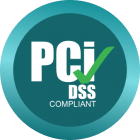Small businesses of today are growing at a rapid pace. The hyper-growth brings along with it, a set of repercussions. While some of these challenges have obvious solutions, some don’t; especially when it comes to the financial health of your business.
Employee expenses are the second highest controllable cost in an organization. However, in most cases, managing employee expenses always takes a backseat. Ignoring employee expenses can cause your organization’s to:
- Lose money and resources in the process
- Take up productive time of employees and finance teams
- Decreases financial productivity
- Hamper accounting tasks
- Deprive an opportunity to save money with taxes, vendors, etc
- Increase reimbursement cycles affecting employee experience
Here’s how streamlining your expense reporting process can help manage employee expenses:
- Keep track of all travel and business expenses
- Make expense reporting process quicker
- Alleviates the pain of repeated approvals/workflows
- Improves employee experience
- Identify opportunities to save money and resources
- Shorten the entire employee reimbursement cycle
As a growing business, expense reporting is pivotal to manage expenses. The sooner an organization embraces the best practices to manage expense reports, the better.
Broken expense reporting at small businesses
Reporting business expenses shouldn’t be daunting. However, the sheer lack of processes or ambiguity around existing processes makes it frustrating for employees. To aggravate the consequences, long reimbursement cycles hamper the overall employee experience.
Here’s how expense reporting pans out for an employee at a small business today:
- The employee needs to save the receipt of every business purchase - irrespective of whether it is a paper, email, or card transaction receipt
- Needs to centrally store receipts for easy access - be it on their computer or personal cloud
- Spends hours of productive time sorting out expenses based on date, location, expense type, and so on
- Manually fills in the monthly expense report on an Excel report template
- Shares the expense reports over email for approval
- Submits a separate folder of receipts for the expenses to the finance team
- Waits to hear back for an update from the approver
- Hears back from the approver with changes over email
- Manually updates the changes and again shares the expense report
- Awaits the next reimbursement cycle to receive payments
- Manually inquires with approver or finance team about payment processing
Here’s how expense reporting pans out for the employer today:
- The approver receives expense reports from multiple employees over different email threads
- Forwards the expense reported to the finance team over email
- The finance team manually verifies every expense in the report to check for policy violations
- The Finance team then reports the violations back to the approver
- The approver informs the employee about the changes required
- He/she then await for the updated expense report
- The approver receives the updated expense report and shares it with the finance team
- The Finance team manually reverifies the expenses
- The team then pushes the report for processing payment
- Once done, the finance team manually updates the accounting books with the reimbursement to stay compliant
In a traditional expense reporting system, the process becomes time-consuming and tedious. Further, it causes more friction than saves costs. Today, the cost of manually processing one expense report stands at 58 USD. If that wasn’t enough, it takes 20 minutes to create one expense report. These facts shed light on just how unscalable manual expense reporting is.
Fixing broken expense reporting at small businesses
Today’s small businesses cannot afford to lose out on time and productivity. Expense reporting has a massive negative impact on both these factors. Organizations should reconsider and prioritize focus on turning expense reporting a real-time experience for their employees.
When expense reporting turns real-time, employers or finance teams automatically benefit. Here’s how.
- The finance team receive reports on time, thereby, shortening the turnaround time for approvals
- This, inturn, makes accounting easy, resulting in books closing on time
- As a result, it shortens the reimbursement cycles, providing a differentiated employee experience
Turning expense reporting real-time with Fyle
At Fyle, we believe in being present at every point of an employee’s expense. Ergo, we’re always there to report any and all kinds of expenses. Here are some ways we help.
Tackle receipt management woes
With Fyle’s mobile app, employees can easily scan your receipts. On scanning, our receipt scanning feature instantly extracts and fill the expense report with all the important information. Your employees do not have to manually fill the report, thus, eliminating data entry errors in the process as well.

Report expenses right from the mailbox
Whether your employees use Gmail or Office 365, they can report expenses along with the e-receipts using Fyle’s extensions and email add-ons. Employees can now easily report business expenses without leaving their inbox.
.png)
Achieve accurate mileage tracking
Mileage logging can be a tedious task for employees especially while they are on the road. With Fyle, your employees will never have to worry about tracking distance and calculating mileage.

Track all corporate credit card expenses
Assign and manage multiple corporate credit cards and keep track of business expenses. You can also reconcile expenses to card transactions, seamlessly.
.png)
These are just some of the ways Fyle transforms expense reporting for your organization. Fyle as an expense management software can help your employees to tackle expense reporting challenges. Schedule a demo to know more about Fyle magic!
.jpeg)










